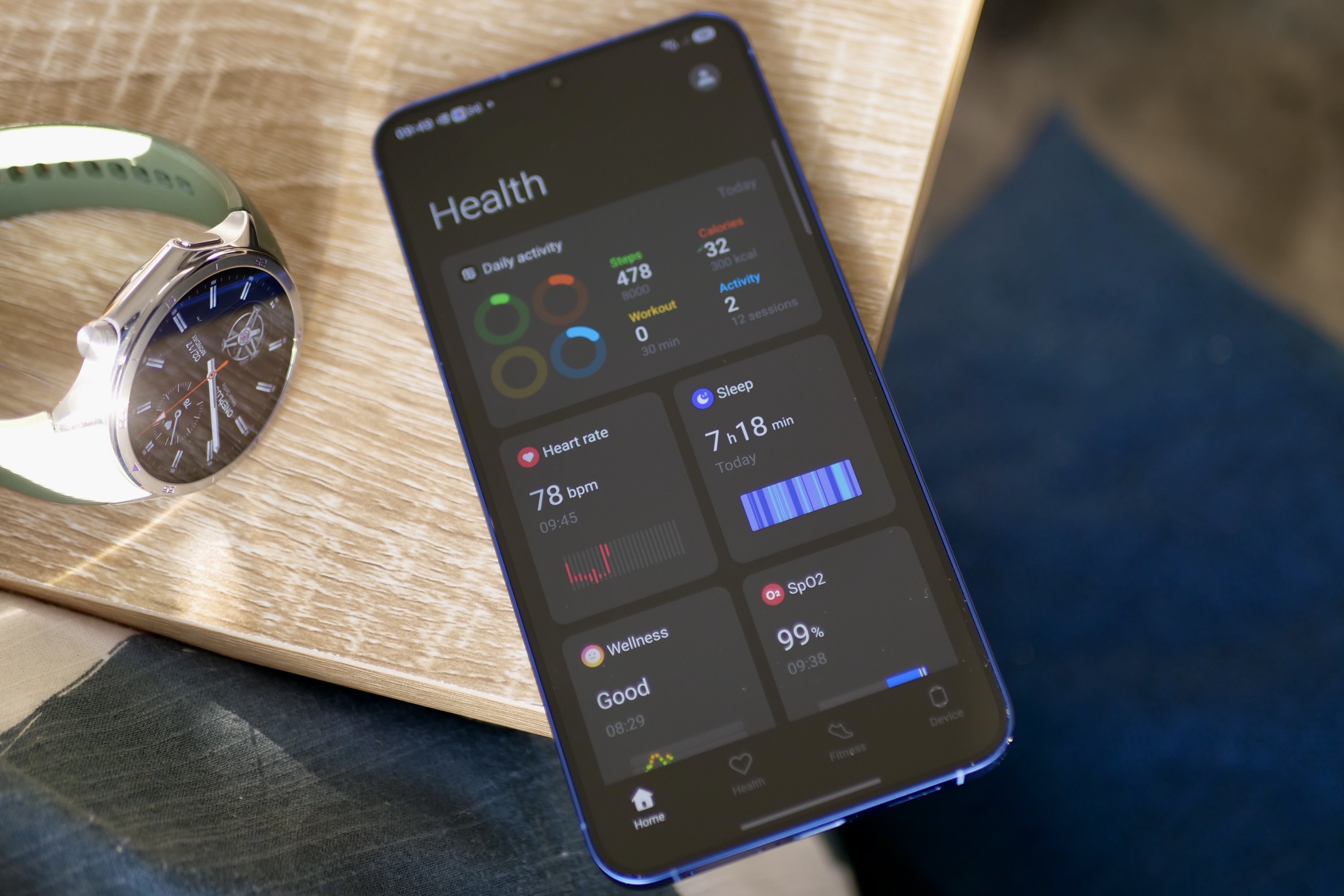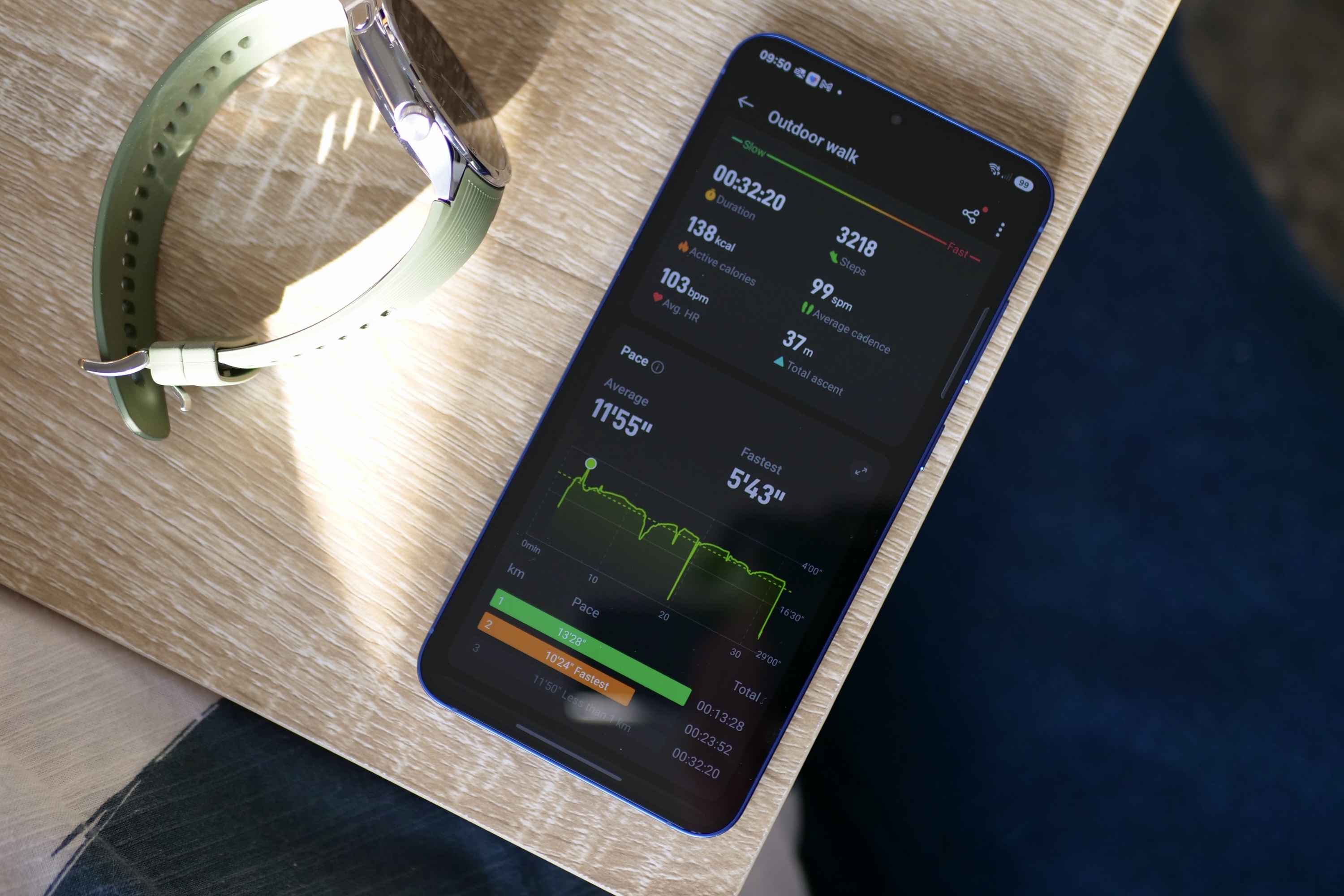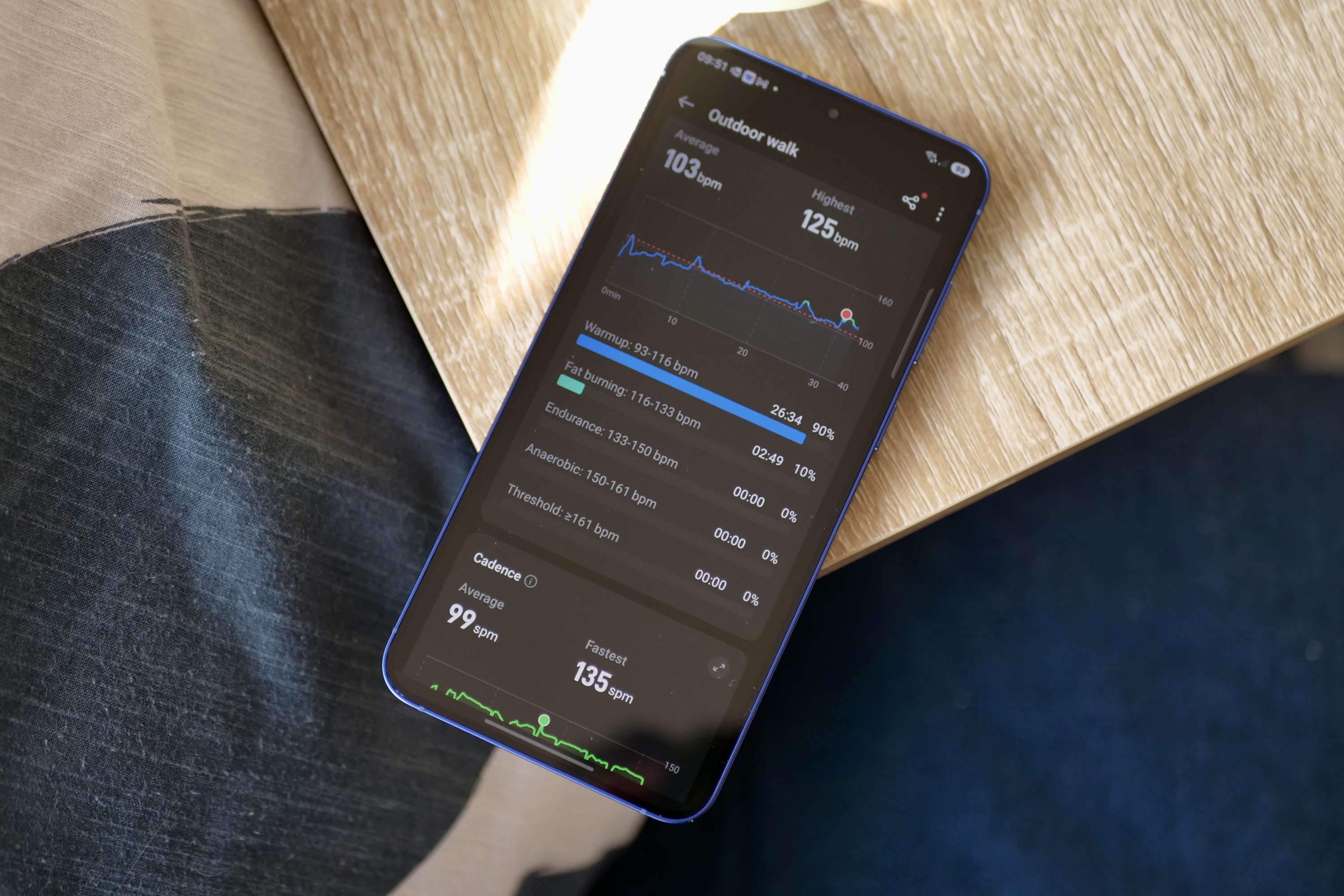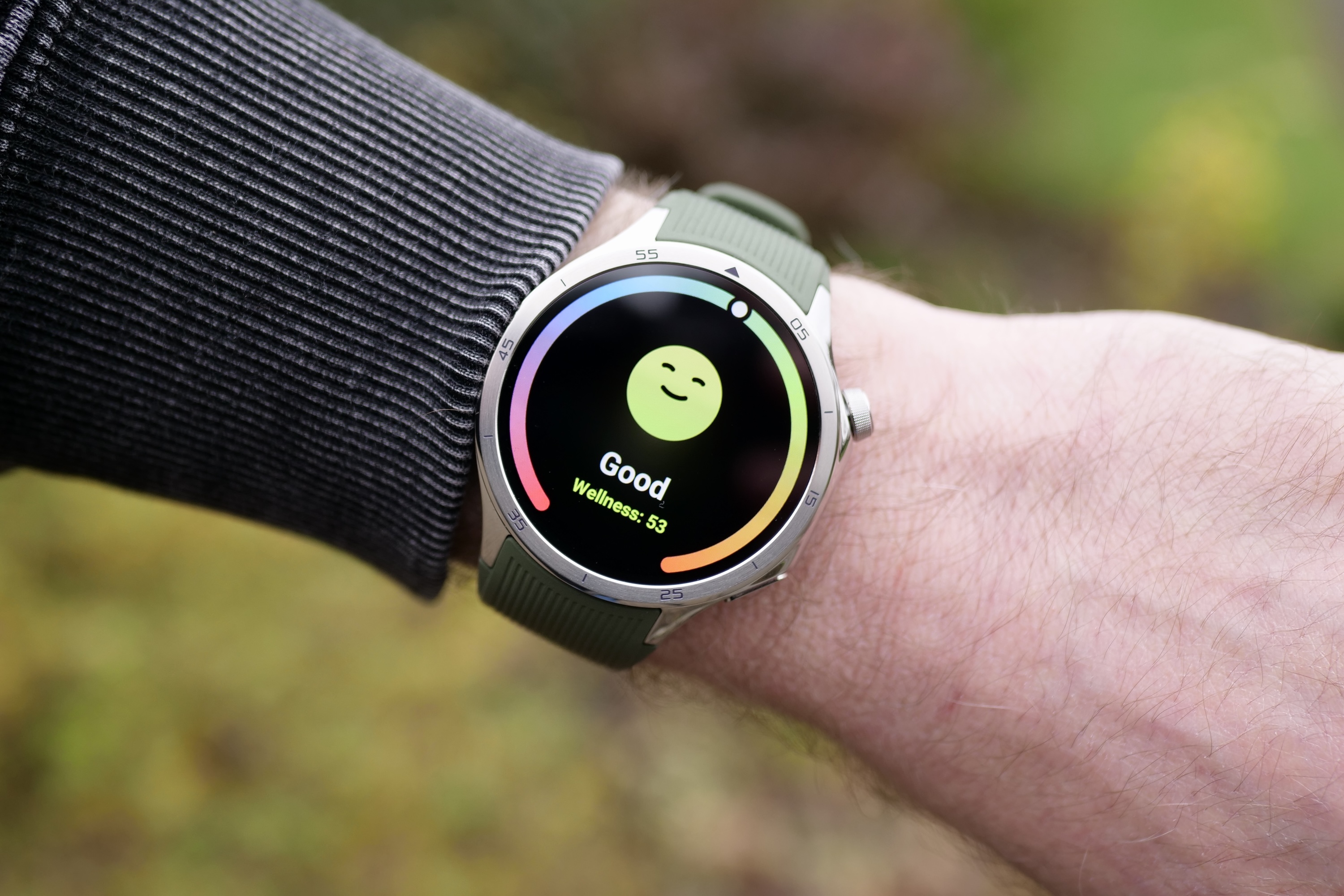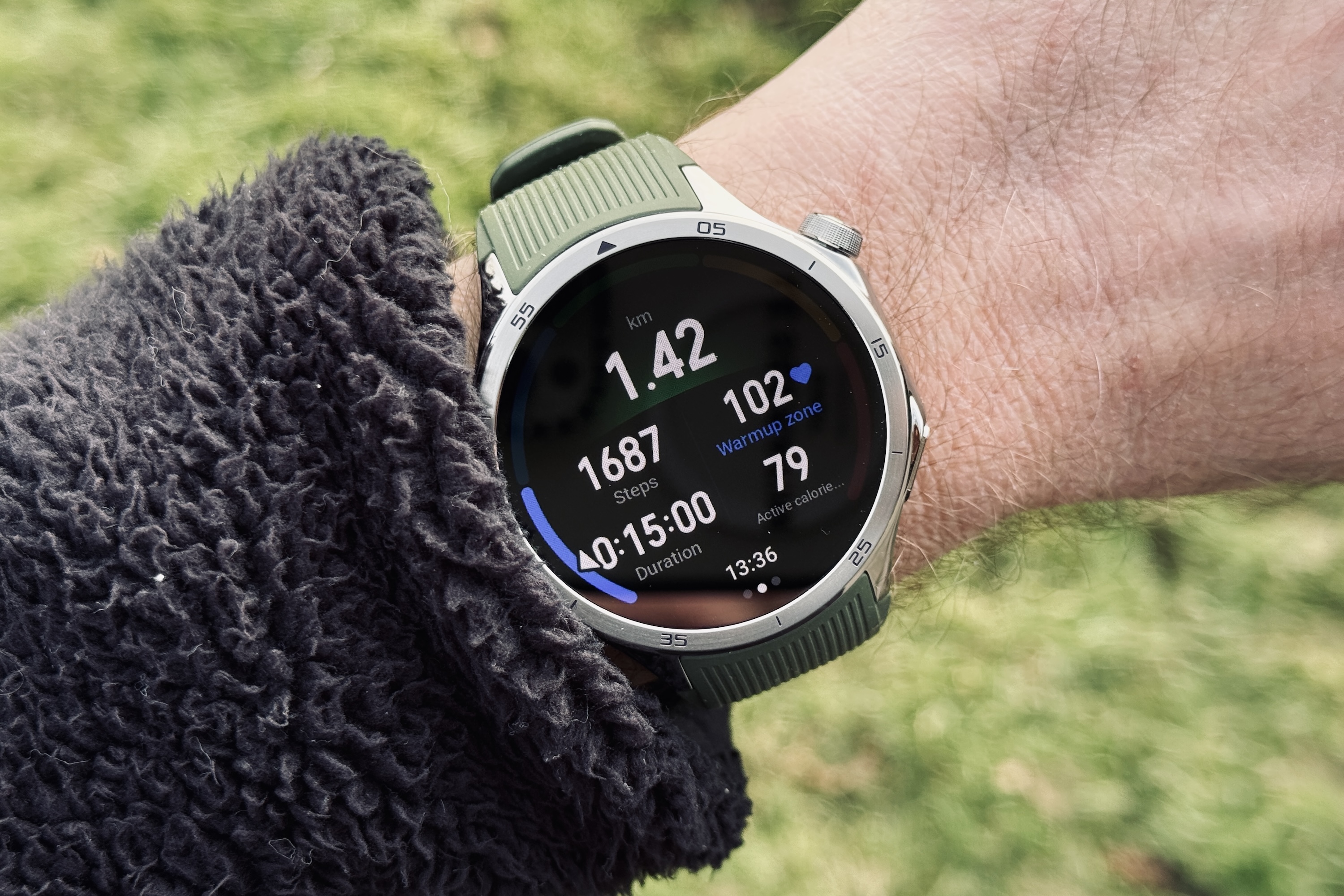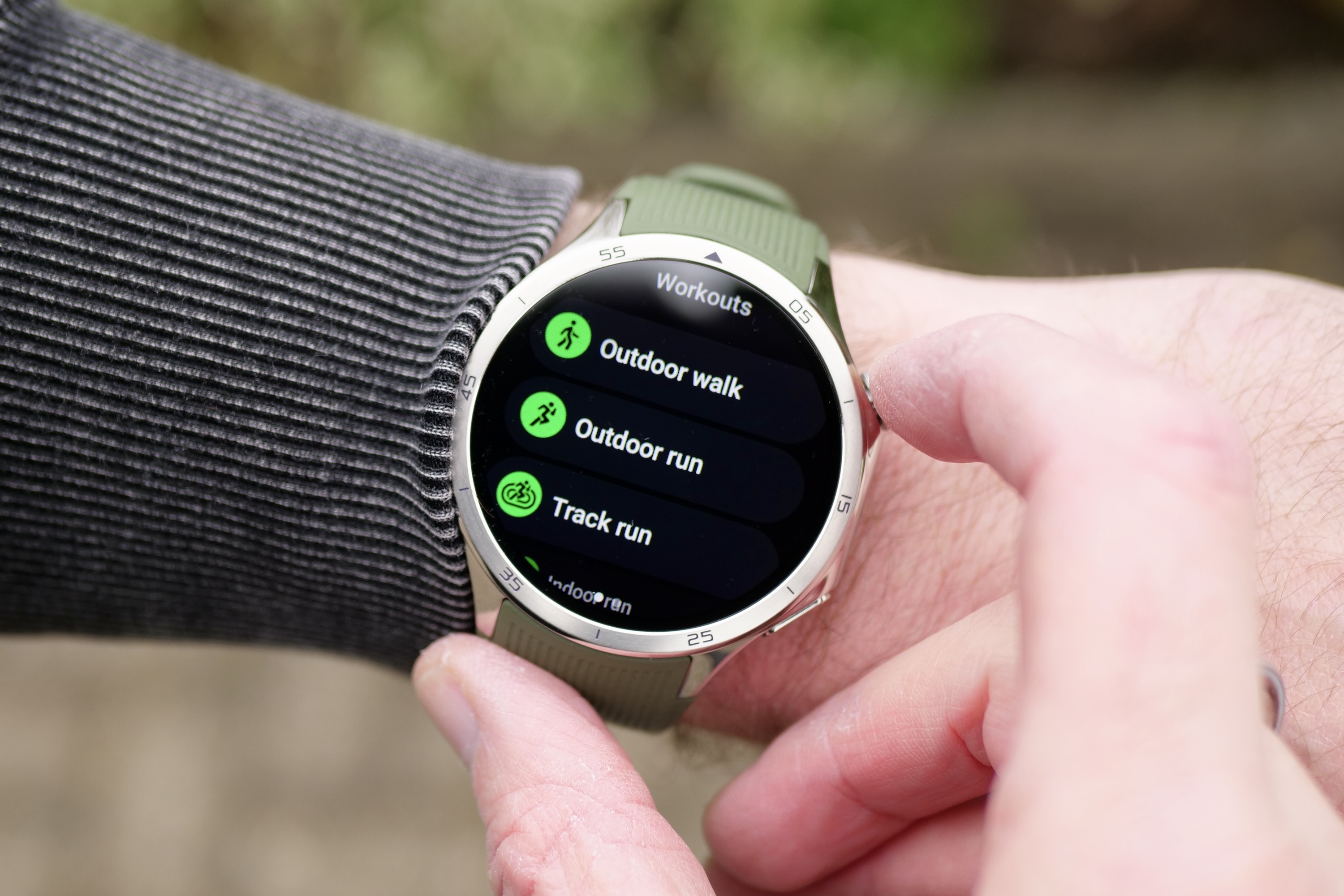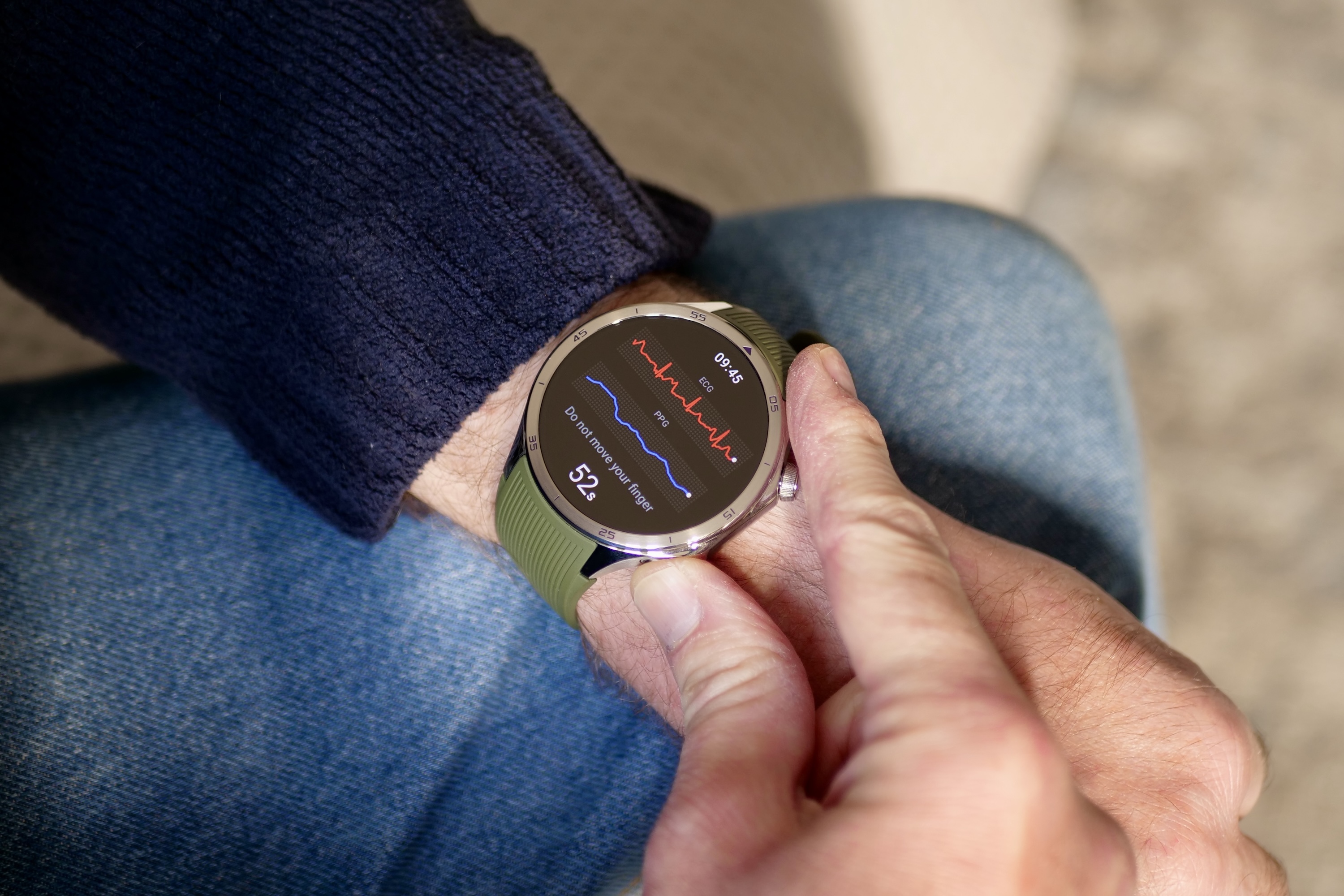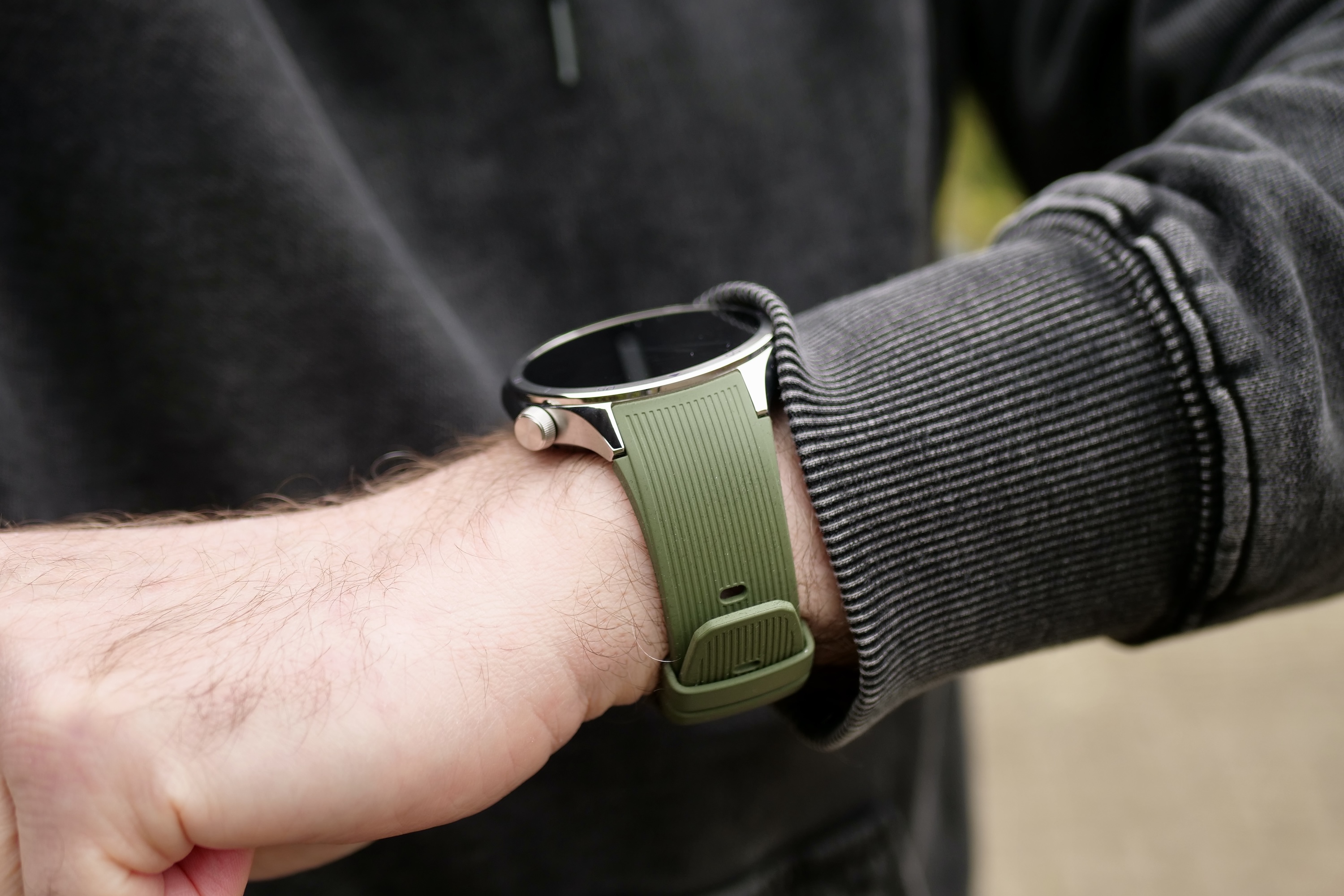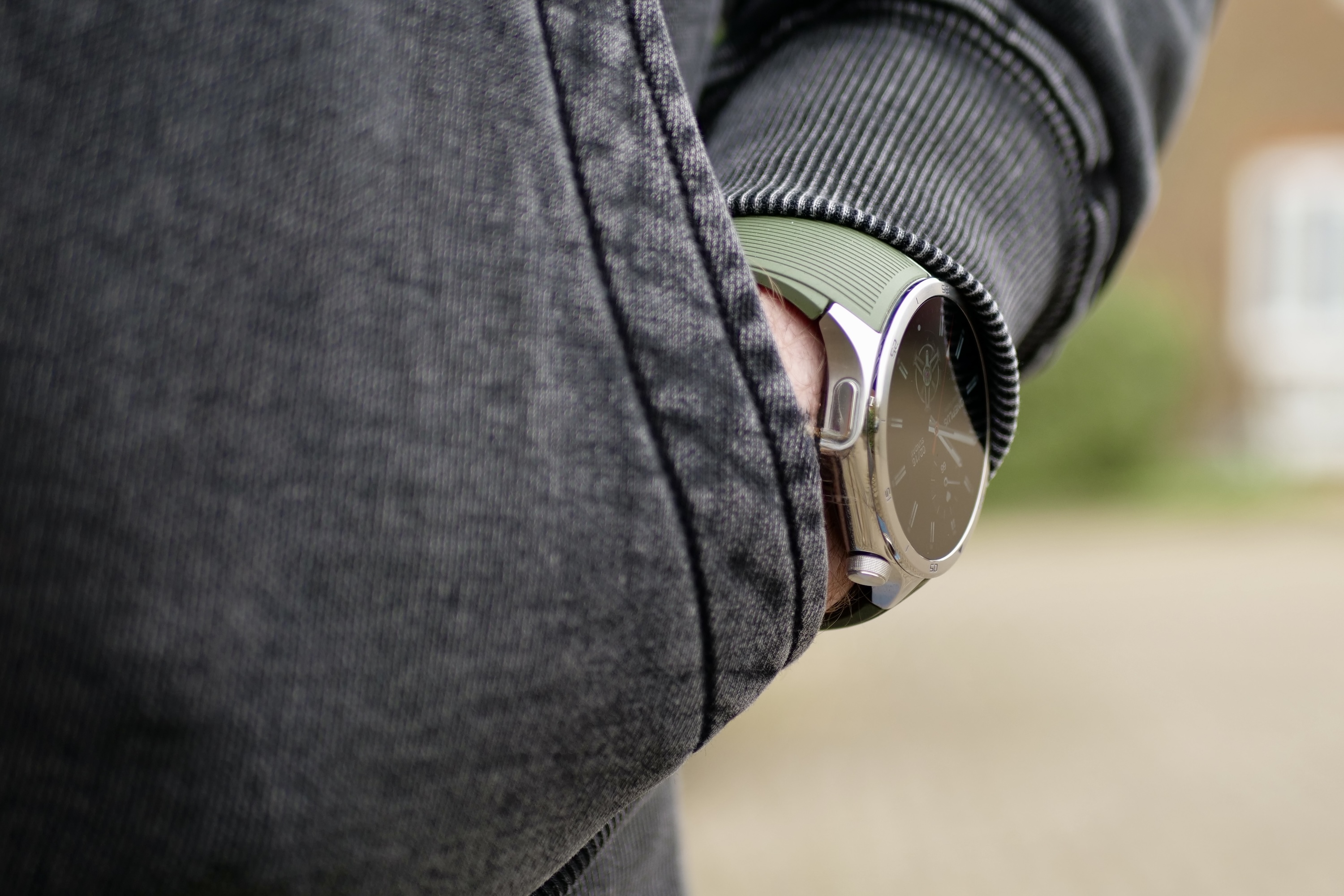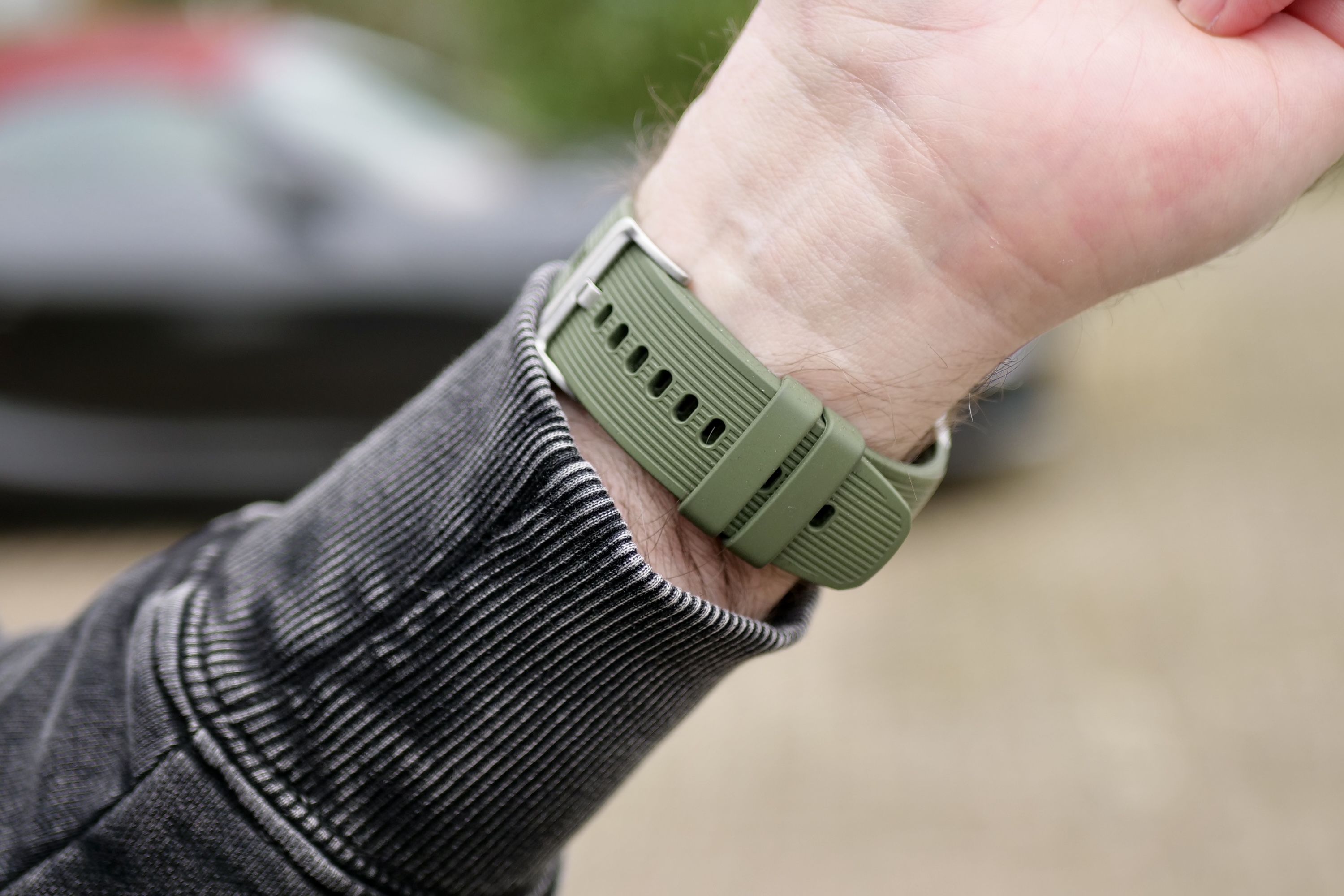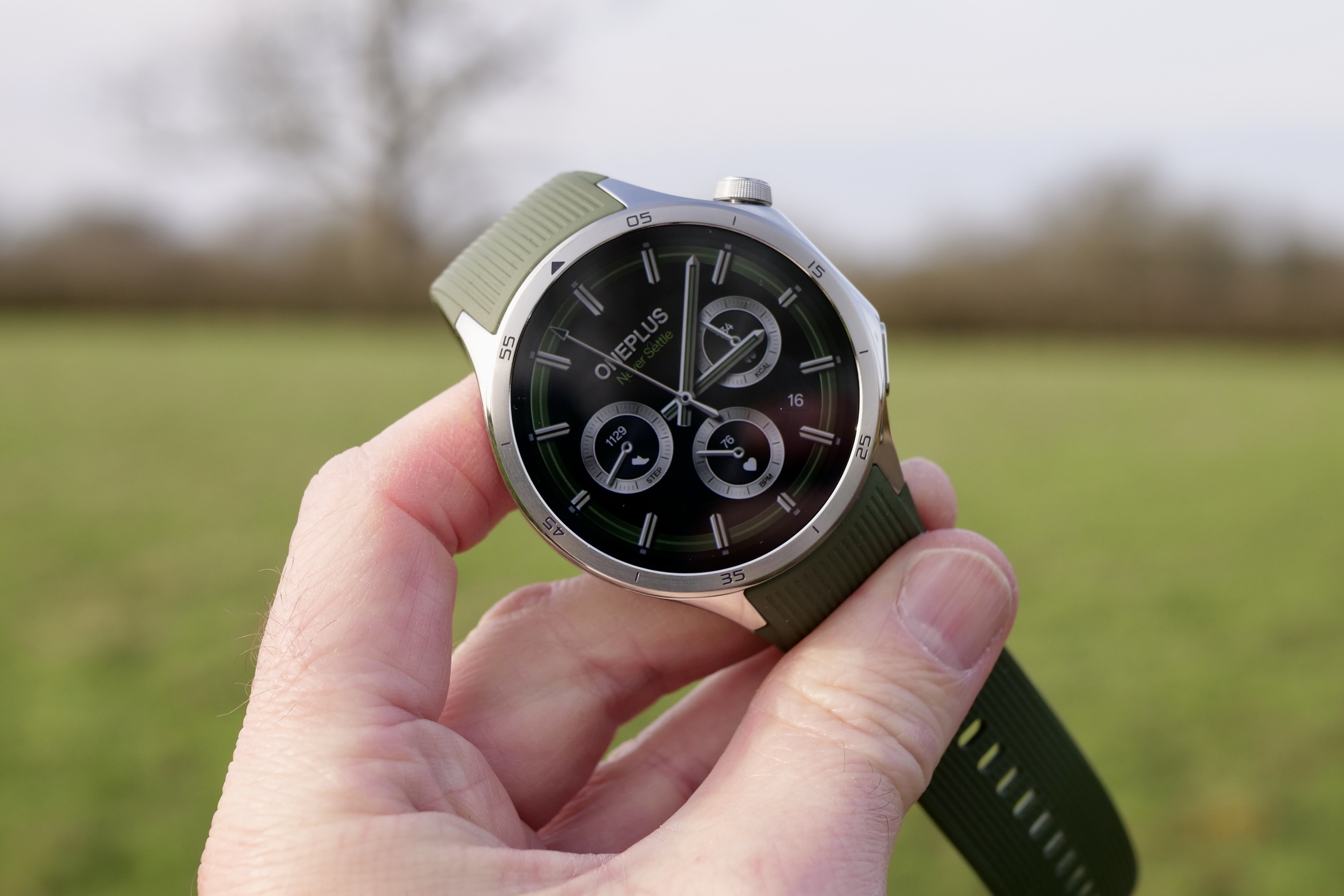OnePlus Watch 3
MSRP $329.00
“The OnePlus Watch 3 perfectly blends high quality design and materials with superb performance and technical ability, then adds in fantastic battery life for a killer product.”
Pros
- Classy design
- High quality materials
- Fantastic performance
- Long battery life
- Comprehensive health and fitness features
Cons
- Only one size available
- Cheap, awkward charging puck
Some watches just feel right. It’s impossible to say why, or how they do, but you can put on a watch and it instantly feels at home on your wrist. The right size, the right shape, and the right look for you. Not to give too much away at the top of this review, but that’s the OnePlus Watch 3 for me. Now lets discuss whether it’ll be “the watch” for you or not.
OnePlus Watch 3 specs
| OnePlus Watch 3 | |
| Dimensions | 46.6 x 47.6 x 11.7mm |
| Weight | 81 grams with strap, 49.7 grams without |
| Durability | IP68, MIL-STD-810H, 5 ATM water resistance |
| Processor | Dual-Engine with Qualcomm Snapdragon W5, and BES2800 |
| Software | Google Wear OS 5, and RTOS |
| Display | 1.5-inch AMOLED with 466 x 466 pixel resolution, and 2,200nits peak brightness |
| Health sensors | Heart rate sensor, blood oxygen sensor, wrist temperature sensor, ECG |
| Connectivity | Bluetooth 5.2, Wi-Fi |
| Compatibility | Android. Requires OHealth app for some features |
| Colors | Black Titanium or Emerald Titanium |
OnePlus Watch 3: design

A lot of what makes a watch “right” comes down to its design, the materials used, and how it’s shaped to fit on your wrist. There’s a subtle beauty to the OnePlus Watch 3’s polished stainless steel case, with the unusual raised section around a single button at the four o’clock point. Oddly, this protrusion is not a crown guard, as the crown at two o’clock sits proud of the case at an angle. Its asymmetrical shape means it should be “wrong,” but this bold design flair gives the OnePlus Watch 3 character.
The crown itself is fluted for grip, and it tapers slightly towards the end, making it stand out as a feature instead of solely something functional. A new titanium bezel further lifts the design. The decision to integrate the quick release strap into the lugs minimizes the size effectively, and means the smartwatch fits comfortably on your wrist and keeps itself central too. The strap has plenty of adjustability, a secure metal clasp, and two keepers. It has been supremely comfortable. With the strap this is an 81 gram smartwatch, and the case is 47mm wide, but don’t think this means it’s a heavy weight on your wrist. I’ve found it barely noticeable.

I really like the way the OnePlus Watch 3 looks and fits. I’ve worn it 24 hours a day since it arrived, for over a week now, and it hasn’t become annoying or fatiguing. It hasn’t become sweaty or irritating overnight either so sleep tracking shouldn’t be an issue. It just about fits under a cuff, but it’s also at home being proudly shown off, something I haven’t minded doing at all. It has a classy style all of its own, and the polished steel glints in the sunlight, while the screen is flush with the sapphire crystal and titanium bezel for a highly integrated look.
I’m less convinced about the color options though. There’s a basic Obsidian Titanium — that’s black to you and me — version that’s a bit dull, and then the Emerald Titanium version I’ve been wearing. In 2024, green was the big trending color in wrist watches, with everyone from H. Moser & Cie and Patek Philippe to Tag Heuer and Rolex all adding a green dialed sports watch to their inventory recently. It’s not quite for me, despite its lauded versatility, and I’d have loved to see a good, old classic blue added to the range to go with it.

Then there’s the size of the OnePlus Watch 3, in that there’s only one option. OnePlus has only made a single size — large — for all its smartwatches so far, so it’s no surprise it hasn’t changed its strategy here. However, some won’t want a big smartwatch, and their attention will immediately turn to the 40mm Samsung Galaxy Watch 7 or the 41mm Google Pixel Watch 3 instead. These two things aside, the OnePlus Watch 3 looks and feels fantastic.
OnePlus Watch 3: battery and charging

Rarely do we go from design straight into talking about the battery, but it’s going to be a very big selling point on the OnePlus Watch 3, and needs discussing straight away. I last charged the smartwatch’s battery on Thursday evening, and have worn it every day and all night since. It’s Monday morning as I write this, and there’s still 35% charge remaining. It’ll easily last until tomorrow morning, giving four full days of use on a single charge.
I’m using the always-on screen, continuous heart rate tracking, and have the breathing monitor feature active. I’ve tracked sleep and a pair of 30 minute workouts, used a new 60-second health check feature a few times, but didn’t have continuous blood oxygen monitoring active. It’s connected to a Samsung Galaxy S25 Plus, and has received notifications throughout this period of use. I’ve used it as a smartwatch, rather than keeping power intensive features turned off, and consider four days on one charge to be excellent performance. It’s not quite up there with the TicWatch Pro 5, Pro 5 Enduro, or Atlas, but it’s close. It’s more than I achieved with the Samsung Galaxy Watch Ultra, and more than three-times the battery life from a 40mm Galaxy Watch 7.

It’s somewhere in-between OnePlus’s own estimates, which put it at five days in “smart” mode, and three days with heavy use. A special 631mAh Silicon NanoStack battery and new dual-chip architecture has made all this possible, and it’s similar to what’s found inside the OnePlus 13 smartphone.
Despite the OnePlus Watch 3 being made from high quality, expensive materials, the charging puck is a horrid piece of white plastic. It magnetically attaches to the back of the smartwatch, but combined with the integrated strap its natural resting position is screen-down, which isn’t ideal. Some kind of charging stand, or at least a more sensible designed puck, would have elevated the package above similar systems from Samsung and Apple.
OnePlus Watch 3: health and fitness tracking

An eight-channel optical heart rate sensor, a 16-channel pulse oximeter sensor, and a new temperature sensor combine with electrocardiogram (ECG) measurement to give the OnePlus Watch 3 a full suite of health tracking sensors. It connects to the OHealth app on your Android phone (there’s no iOS support here), and will sync with Strava, Health Connect, and Google Fit. There are 100 activity modes to choose from, and six auto-detect modes too. The smartwatch has accurately recognized when I’ve been out for a walk on each occasion.
The dual-frequency GPS — which connects to L1 and L5 satellite signals — is very fast, and the trail on the map at the end of your workout has a clever “heat” mapping to show where you worked hardest along the route. The app shows heart rate zones, cadence, elevation, and pace along with the usual distance and calorie burn. The layout is clear and logical, much like OHealth in general.
On the main screen there are tiles showing all your current data, from sleep to ECG, with your daily activity scores at the top. Tap each one to see more data. Unfortunately the layout can’t be edited, and there’s a redundant Stress tile in my pre-release version of the app. Stress has been replaced by Wellness and although it’s nicely designed as a tile on the watch, the actual data and the way it’s presented is confusing and not especially informative.
One of the main new features is the 60-second Health Check-in. In the quoted time it evaluates heart health, blood oxygen levels, wellness, and wrist temperature, while also performing an ECG. Together with data from your sleep it gives you an on-the-spot overview of your health, and whether there’s anything untoward. It also assesses vascular health and provides an indicator for arterial stiffness. It’s not something you’ll use every day, unless you’re feeling unwell, but then it’s not a medical checkup and no substitute for making an appointment with a doctor.

For sleep tracking it returns a different sleep score to my Oura Ring 4, and measures sleep stages differently too, but both are consistent with blood oxygen, heart rate variability, and average breathing rate. It’s never dramatically out of sync though, so I don’t see the results as inaccurate. I’ve manually put the smartwatch into sleep mode each night, as it is a little slow to do it by itself. Sleep data is all shown on the watch too, so there’s no need to look at your phone just to see how you’ve slept. Health is presented in a very informative way in general on the watch, and you won’t be glued to the OHealth app just to understand goal progress, workout data, and sleep.
OnePlus Watch 3: software and performance

The OnePlus Watch 3 has two processors, the Qualcomm Snapdragon W5 and a new BES2800 chip, which handle different tasks on the smartwatch. You’ll never know there are two chips, despite the W5 running Wear OS’s intensive apps and the companion chip running a secondary RTOS operating system for basic system tasks. It’s a different take on Mobvoi’s dual-screen approach to speed and efficiency, and is equally as effective.
It’s wonderfully smooth and responsive, with no hesitation when using the system in general, while apps like Google Maps appear and operate with the same speed as you’ll see on your phone. It’s transformative, and the slick performance gives you confidence to use more apps than on some older Wear OS smartwatches. I recently wore the Galaxy Watch Ultra for an extended period, and find the OnePlus Watch 3 to be equal to, and sometimes even faster to use.
It’s Google’s Wear OS 5 software with OnePlus’s own design of interface. Press the crown to show the app screen, rotate it to zoom in and out, or to scroll through vertical menus, or tap and swipe the screen. The 1.5-inch, 466 x 466 pixel AMOLED is very bright, and the auto-adjustment is swift and reliable, so I’ve always been able to see what’s on the display. Swipe left and right to see different tiles filled with glanceable information, but the list is a little restrictive. I’d like to see a dedicated tile for WhatsApp, for example.
However, there’s a lot to be said about a slick, relatively simple operating system, especially when it’s on top of a seriously powerful processing platform like this. I’ve enjoyed the smartwatch more because it’s not overloading me with information, and instead keeps me focused on my health data, notifications, and helpful apps like Maps and WhatsApp. The speed and efficiency that comes from such a well-optimized platform makes it a brilliant everyday, all-day smartwatch.
OnePlus Watch 3: price and availability

The OnePlus Watch 3 will be available to pre-order on February 18 with a release date of February 25. It costs $329, or 329 British pounds. This is the same retail price as the 44mm Samsung Galaxy Watch 7, a little cheaper than both the 41mm and 45mm Google Pixel Watch 3, and the Mobvoi TicWatch Pro 5 Enduro.
OnePlus only makes a single size Watch 3, and it only comes with a Bluetooth/Wi-Fi connection, with no LTE model announced. If you want an LTE connection so you can make and receive calls and messages without your phone, you’ll have to look at the Pixel Watch 3, the Galaxy Watch 7 series, or the Galaxy Watch Ultra.
Its most obvious competitor is the Samsung Galaxy Watch 7. The design is neat and similar in approach to the OnePlus Watch 3 with its integrated strap, but it’s far more sporty and much less showy. Its performance is great, but the Samsung Health is less intuitive than OHealth. It otherwise performs similarly. The Google Pixel Watch 3 is minimalist in design, and some may find it too dull to look at, but it’s a strong performer and now comes in two different case sizes. The Mobvoi TicWatch Pro 5 range has a tougher, more masculine design, with fantastic battery life. All are similarly priced, but the OnePlus Watch 3 is a wonderful balance of price, design, performance, and features.

The OnePlus Watch 3 only works with Android phones, and does not work with an iPhone. If you want a smartwatch for your iPhone, we highly recommend the Apple Watch Series 10.
OnePlus Watch 3: Conclusion

Out of all the Android smartwatches I’ve worn over the last year or so, the OnePlus Watch 3 has felt the most “right.” It’s an expertly judged mix of great design and high quality materials, superb performance, a blend of useful consumer and pro-level fitness and health features, plus excellent battery life. I’ve happily worn it 24-hours a day, and that’s not something I always willingly do with smartwatches I review.
While I’m wholeheartedly recommending the OnePlus Watch 3 here, as I became more familiar with it, something else came to mind. It’s not the first pitch-perfect device OnePlus has launched recently, as the OnePlus 13 smartphone is similarly accomplished, with true giant-killing potential. Put the OnePlus 13 and OnePlus Watch 3 together, and you’ve got two of the very best mobile products around, which few are capable of matching.
Read the full article here






